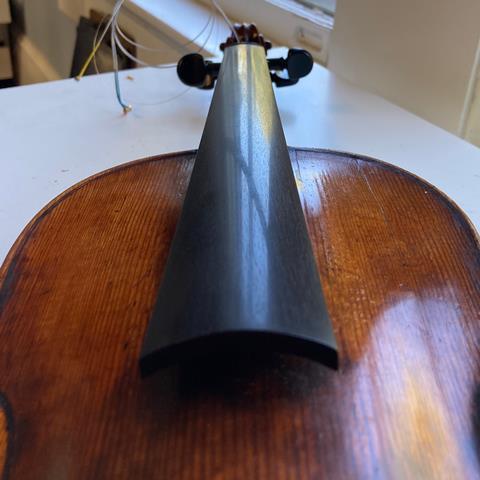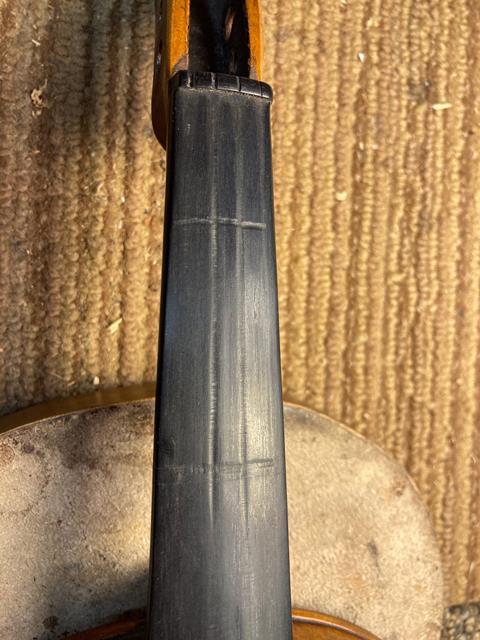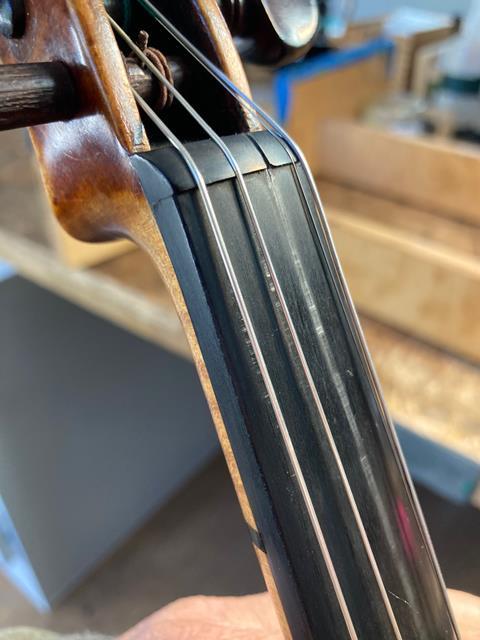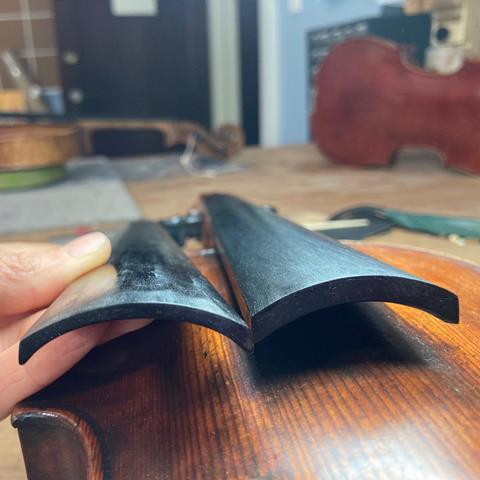How to maintain a healthy fingerboard, including what to look out for, from Sally Mullikin of the Women in Lutherie community

Discover more lutherie articles here
’When was the last time you had your fingerboard planed?’ Based on the number of blank stares I receive whenever I ask this question, many musicians overlook this part of their instrument’s routine maintenance. Allow me to offer a guide on the importance of a healthy fingerboard and how to maintain it!
The fingerboard is there to provide a point of contact against which the strings are pressed. Its surface must be smooth and properly shaped or else the sound and playability of the instrument will suffer. End to end, the fingerboard should have a slight hollow, known as the ’scoop’. The scoop allows the strings to vibrate freely in a long, parabolic curve as they are plucked or bowed. Also important, is the ’fingerboard radius’ which refers to the cross-sectional shaping. This radius should mirror the curve of the top of your bridge to ensure that the strings are positioned in a shape consistent with the surface against which they are being pressed.
If all that seems confusing, the good news is, looking after your fingerboard is quite simple. All you really need to do is bring your instrument to a luthier for regular check-ups, which I recommend doing on a yearly or twice-yearly basis. Your luthier should inspect all aspects of the set up, including your fingerboard, and let you know if anything needs attention.

If you already have a habit of doing this, bravo! You can stop reading now and go back to practising. If you would like a little more in-depth information on how to tell when it is time for a fingerboard planing, read on!
Although most fingerboards are made from very dense ebony, wear does inevitably occur. The rate of this wearing process depends on several factors, including the type of strings you use, the amount of force your fingers exert on the strings, and how often you play. I like to joke with my clients that I know how much they practise by looking at their fingerboard.
Read: Looking after your instrument: the secret to bridge placement
Read: Looking after your instrument: a beginner’s guide on how to change your strings
Listen: The Strad Podcast Episode #47: Korinthia Klein on basic instrument maintenance

Fingerboard wear can appear as long, thin divots running under the strings or as wavy bumps formed along the length of the board by the vibrations of the strings. Here’s a trick I teach a lot of my clients: take your instrument near a sunny window or a bright lamp. Catch the reflection of the light on the surface of your fingerboard. Carefully tilt your instrument back and forth as you sight down the board. Can you see ripples on the surface of the ebony? This is a sign that your fingerboard needs planing. Often the wear is concentrated where you play the most, ie: first position. It may not be obvious until a luthier checks it with their straight-edge.

The sound of your instrument can also indicate that its fingerboard is due for a planing. Inconsistencies and bumps on the board are often the culprit behind a fuzzy, unclear tone. I call this the ’snare drum effect’. In some cases, you might hear a twangy buzz when you pluck the string. Unless you have always dreamed of joining the percussion section of the orchestra, you should definitely have this addressed!
Inconsistencies and bumps on the board are often the culprit behind a fuzzy, unclear tone
Finally, pay attention if your left hand is unusually strained or fatigued. This can be a sign your fingers are working too hard to depress the strings. If the heights of the bridge and nut are correct but discomfort persists, an inappropriate amount of scoop in the fingerboard is probably to blame. Playing injuries can be devastating, so please don’t ignore what your fingers are telling you!
I sometimes get the sense that musicians are reluctant to have their fingerboards planed because they know there is a finite number of times this operation can be done before the board gets too thin and needs replacing. While this is true, let me reassure you that a competent luthier using the correct tools will only remove the minimum of wood necessary to restore a good playing surface. Assuming your fingerboard starts out at a sufficient thickness, it should last through many years of playing and planing.

When the day arrives that you do need a brand new fingerboard, I would encourage you to ask your luthier about using an ebony alternative. Many of us are rethinking our use of tropical hardwoods as more and more of these species end up on the endangered list. For more on this, see Overcoming our addiction to tropical hardwoods: the latest alternatives on The Strad website.
I hope this blog post gives you more information and confidence when it come to fingerboard maintenance.
All photos courtesy Sally Mullikin
Read: Looking after your instrument: an introduction to soundposts
Read: Looking after your instrument: a guide to cleaning and polishing
Explore more lutherie articles here
Best of 2022: The Strad’s 12 Days of Lutherie
- 1
- 2
- 3
- 4
- 5
 Currently reading
Currently readingLooking after your instrument: Fingerboards demystified
- 6
- 7
- 8
- 9
- 10
- 11
- 12






















































No comments yet